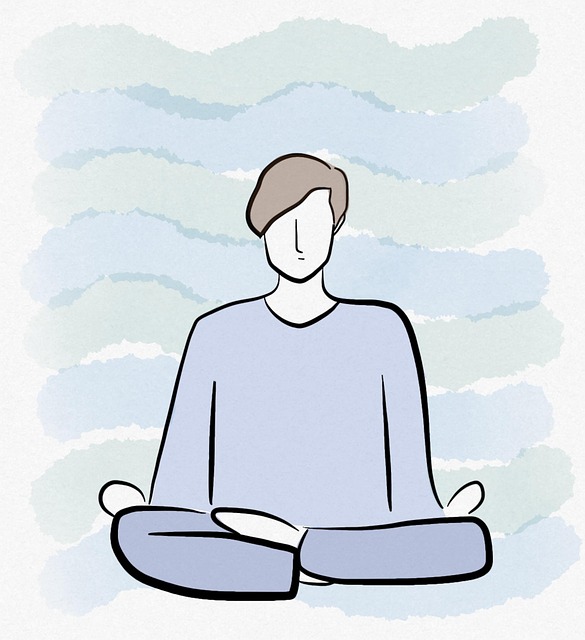Resilience-focused exercises like RFM (Resilience, Flexibility, Mastery) are integrated into therapy for Longmont Panic Disorder and Anxiety Attacks, significantly improving mood management and reducing panic attack occurrences. Culturally sensitive care plans, combining Cognitive-Behavioral Therapy (CBT), tailored support, and regular exercise, effectively manage symptoms. Physical activity releases endorphins, enhances emotional regulation through journaling, and provides safe trauma processing spaces. Building resilience through mindfulness, relaxation techniques, structured routines, and Mental Health Education Programs strengthens individuals' ability to navigate challenges, promoting mental well-being in Longmont Panic Disorder and Anxiety Attacks Therapy.
“Uncover the power of RFM (Rest, Focus, Movement) as a transformative tool for building resilience, especially in managing Longmont Panic Disorder and anxiety attacks. This article guides you through an effective approach to mental well-being. We explore how RFM can mitigate symptoms associated with panic disorder, offering practical strategies to incorporate into daily routines. From understanding the core principles of RFM to implementing specific exercises for anxiety management, discover simple yet powerful ways to enhance resilience and reclaim control over your mental health.”
- Understanding RFM and Its Role in Resilience Building
- Longmont Panic Disorder: A Comprehensive Overview
- Incorporating Exercise into Anxiety Attack Management
- Practical Resilience-Building Exercises for Daily Life
Understanding RFM and Its Role in Resilience Building

Resilience is a key factor in managing stress, anxiety, and even disorders like Longmont Panic Disorder. RFM (Resilience, Flexibility, and Mastery) exercises are designed to help individuals develop this resilience by strengthening their emotional and mental fortitude. These exercises focus on three primary aspects: building adaptability to stressful situations, enhancing flexibility in thinking and behavior, and fostering a sense of control and mastery over one’s life.
In the context of Longmont Panic Disorder and Anxiety Attacks Therapy, RFM techniques can significantly improve mood management skills. By cultivating resilience, individuals become better equipped to handle anxiety-inducing events or thoughts, reducing the intensity and frequency of panic attacks. Moreover, healthcare provider cultural competency training often emphasizes these exercises as a holistic approach to anxiety relief, catering to diverse patient needs within a sensitive cultural framework.
Longmont Panic Disorder: A Comprehensive Overview

The Longmont Panic Disorder is a condition characterized by recurrent and unexpected anxiety attacks, often accompanied by intense fear and physical symptoms. This disorder can significantly impact an individual’s daily life, making even routine activities challenging. Therapy plays a pivotal role in managing and overcoming panic disorder, offering various effective approaches to help individuals regain control over their lives.
Anxiety attacks therapy, specifically tailored for this condition, typically involves cognitive-behavioral therapy (CBT). CBT helps patients identify and challenge negative thought patterns contributing to anxiety. Additionally, techniques like mindfulness meditation and relaxation exercises foster inner strength development and self-awareness, enabling individuals to manage their symptoms effectively. Cultural sensitivity in mental healthcare practice is also crucial, ensuring that therapeutic approaches are tailored to the individual’s unique cultural background and beliefs.
Incorporating Exercise into Anxiety Attack Management

Incorporating regular exercise into anxiety attack management can significantly reduce symptoms and improve overall mental wellness. For individuals dealing with Longmont Panic Disorder and Anxiety Attacks, physical activity serves as a powerful tool to combat the intense feelings of fear and discomfort that accompany these episodes. Exercise releases endorphins, often referred to as ‘feel-good’ hormones, which can help regulate mood and promote relaxation. This, in turn, reduces the body’s stress response, making it easier to manage anxiety attacks when they occur.
Mental Wellness Journaling Exercise Guidance, tailored for this purpose, can enhance the benefits of physical activity. By documenting thoughts, emotions, and experiences during exercise, individuals gain valuable insights into their anxiety triggers and patterns. This self-reflection, combined with the physiological effects of exercise, contributes to better emotional regulation and enhanced resilience. Additionally, Trauma Support Services and Mental Health Education Programs Design that incorporate movement can provide safe spaces for individuals to process past traumas and develop coping strategies, further strengthening their ability to manage anxiety in daily life.
Practical Resilience-Building Exercises for Daily Life

Incorporating resilience-building exercises into daily routines can significantly aid individuals dealing with Longmont Panic Disorder and Anxiety Attacks Therapy. Simple yet effective practices such as mindfulness meditation, deep breathing techniques, and progressive muscle relaxation help manage stress responses. These methods encourage a strong mind-over-matter mindset, empowering individuals to take control of their mental health.
Additionally, engaging in regular physical activity, maintaining structured sleep patterns, and practicing good organizational skills can prevent burnout. These activities are integral parts of designing comprehensive Mental Health Education Programs, fostering overall well-being. By combining these strategies, individuals can enhance their ability to navigate challenges, promoting a more resilient mindset.
Resilience is a powerful tool in managing conditions like Longmont Panic Disorder and anxiety attacks. By understanding RFM (Resource, Flexibility, and Mastery) and incorporating effective exercises into daily routines, individuals can significantly enhance their ability to navigate challenging situations. The strategies outlined in this article provide a practical framework for building mental fortitude, offering hope and actionable steps towards overcoming anxiety-related disorders. Through dedicated practice, these techniques can empower individuals to lead more fulfilling lives, free from the relentless grip of panic and anxiety attacks.














